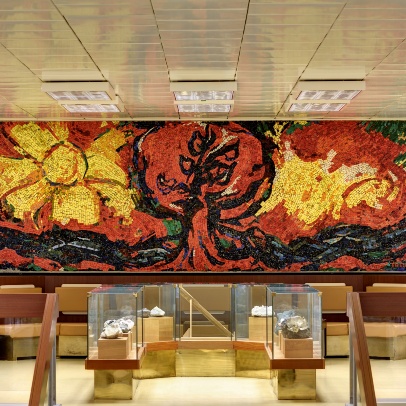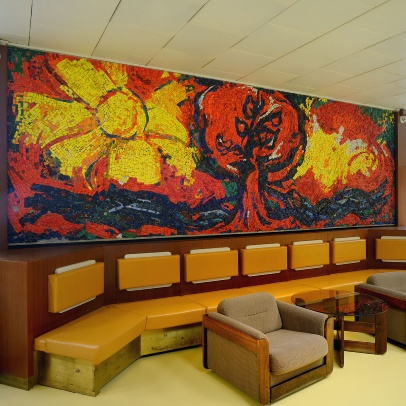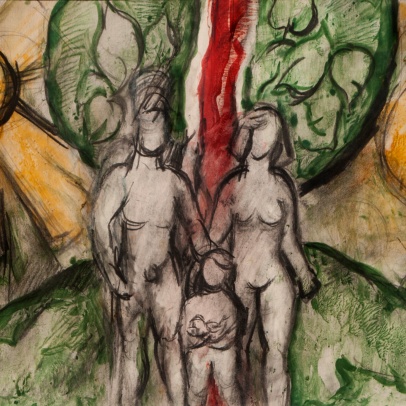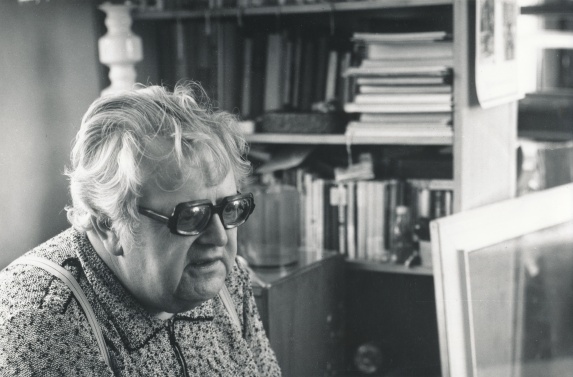Name: Geology / Tree of Life
Author: Josef Treuchel
Dating: 1986–1987
Location: in the interior on the first floor of the Geological Pavilion of Prof. František Pošepný on the VŠB-TUO campus
Execution: a glass mosaic of chipped glass enamel measuring 200 x 600 cm
TREE OF LIFE AS GEOLOGICAL PHENOMENON
Geological Pavilion of Prof. František Pošepný in Ostrava-Poruba gathers and keeps mineralogical, petrographic, paleontological and regional geological collections, which serve for teaching, research and popularization purposes. Although it had been referred to as a “geological documentation warehouse” in documents from the time of its construction, it is essentially an exhibition building, where minerals and rocks are the museum exhibits. This special gallery was supposed to be decorated by a work of art.
The visual design of the building from 1985, drawn by architect Vladimír Svoboda, intended a popular, although a variously construed theme at that time, the Tree of Life. Under this title, the artists presented many different ideas. One artist created a stylized tree with its fruit, another one associated the theme with the motif of the family, the third understood the assignment as an environmental issue, and yet another one remembered the biblical tree of life that referred to sin and redemption. None of these concepts, however, quite fit in the geological pavilion. Thus, when the Kopřivnice-based painter, the already Meritorious Artist Josef Treuchel, who had won the contract, prepared one of the five designs submitted to the artistic committee and presented an image of a family with a tree in the background and prevailing shades of green associated with the spring, he could not possibly succeed. By coincidence, this design has been preserved, and it is interesting to compare it with “option no. 3”, which was finally selected and realized. It illustrated the evolution of life from the aspect of the geological formation of our planet.
Here, Treuchel omitted the figurative motif and adapted the tree in the centre of the mosaic more to a volcano with lava flowing from the depths of the earth forming its surface. He tuned the mosaic to bright red colour with contrasting bright yellow (especially the large sun on the left, perhaps the only direct link between the two known designs) and dark blue (the cooled lava). The expressivity is typical for Treuchel, and one suspects the influence of the Czech painter Jan Bauch and the Dutchman Vincent van Gogh. Compared to the moderate “family” design, the selected option no. 3, which we could undoubtedly call Geology, appears more true-to-life and more convincing. Moreover, it is also a better fit in Treuchel’s work as a whole, which is characteristic by emotional, almost symbolically experienced stylization of reality. Besides more traditional themes such as the landscape of the Beskydy Mountains area or of boats in harbours, he also painted industrial Ostrava and its emerging mines as well as bleak, dark corners of shafts and coking plants telling the mysterious story of the birth of coal. In this point, Treuchel’s painting work converges with the mosaic made for VŠB-TUO. The high-quality realization of its design was greatly helped by the use of chipped glass enamel, the most costly and the most impressive technique that allows for the use of a broad range of colour shades. As said by the ancient Romans, who were also big fans of mosaic art: “Finis coronat opus”.



